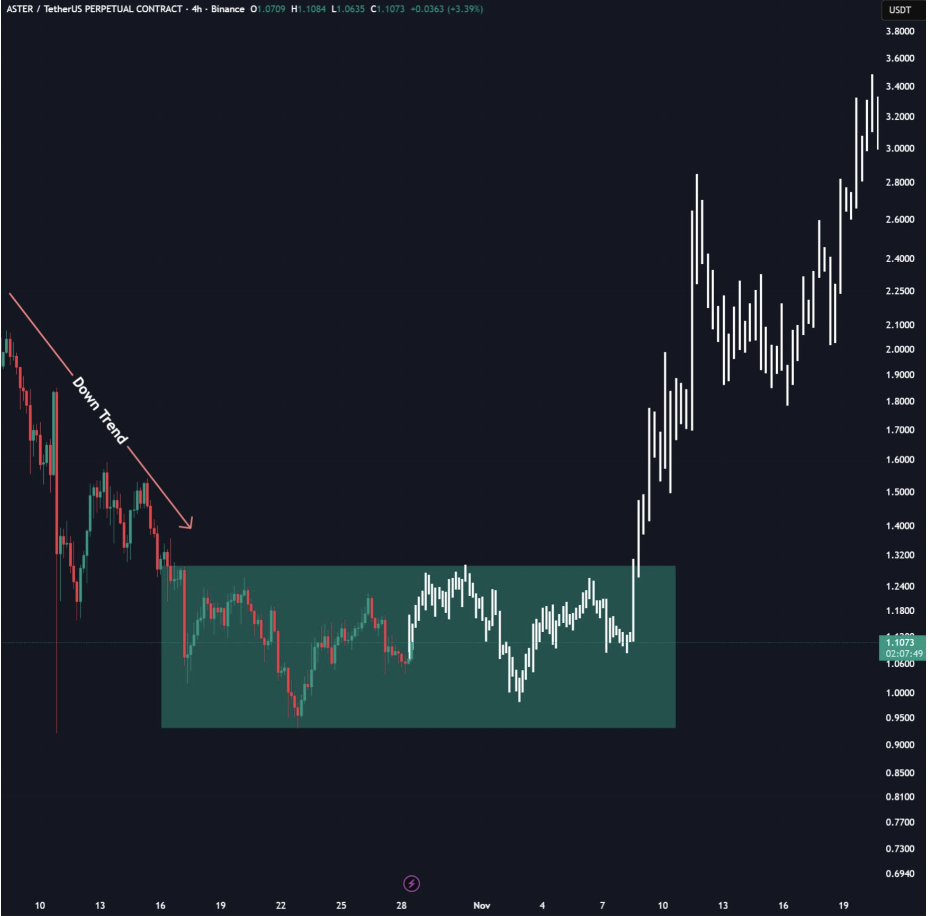- Aster begins daily buybacks starting Oct. 29, using the existing wallet to fund the S3 airdrop.
- Lower supply and strong trading volume ($3T+) could stabilize the token and lift sentiment.
- Technicals show a completed accumulation phase — a bullish setup as long as price holds above key support.
Aster Crypto just dropped a major update on its Discord — starting October 29, the project will kick off daily buybacks, a move that instantly caught the attention of its holders. The news comes right after the team confirmed that the upcoming S3 airdrop will use tokens from the existing buyback wallet instead of minting or releasing new ones.
It might sound like a small tweak, but for traders, this is a big deal. It basically means no fresh tokens hitting the market as long as the wallet balance holds, helping stabilize the price and build trust. Many in the Aster community are calling it a smart, “holder-first” strategy — one that finally gives the project a chance to turn sentiment around.
Why This Could Change the Game for Aster
Using the buyback wallet to fund the airdrop is a clever way to manage supply. It keeps the circulating amount stable while signaling to investors that the team isn’t planning to dump new tokens into the market. On top of that, the daily buybacks — funded by real trading fees — show that the protocol is generating enough activity to sustain its token economy.
It’s a morale boost too. For weeks, sentiment around Aster had been fading fast, with many calling it “dead in the water.” Now, this move is reviving hope. When traders believe supply is tightening and the team’s backing the price with real capital, they’re far more likely to hold — or even buy more — in anticipation of future airdrops.
Still, nothing is guaranteed. This strategy only works if the buyback wallet stays funded, and if trading activity remains high enough to keep the system running. If that dries up, or if extra airdrop tokens are needed later, some sell pressure could still sneak back in.
For now, though, Aster’s trading volume sits at nearly $3 trillion, leading all other perpetual DEXs by a wide margin — a strong sign that there’s still plenty of activity to sustain the plan.

Chart Shows Accumulation Phase Ending — Bullish Signs Ahead
Looking at the chart, Aster might be leaving its dark days behind. For months, the price was trapped in a clear downtrend where every bounce got sold off. But after dipping into that marked demand zone, something shifted. The chart flattened out, volume picked up, and the price started to move sideways — a pattern traders often see when buyers are quietly accumulating and sellers are starting to fade.
Then came the breakout. Clean, confident, and fast — the price pushed through resistance with higher highs, confirming what many suspected: that the accumulation phase was ending, and smart money had already positioned early.
As long as Aster stays above that old range, the structure remains bullish. Any small pullback into that zone would likely be seen as a dip to buy, not a reason to panic. It’s the kind of setup where patience pays — especially with buybacks and an airdrop both acting as tailwinds.

Final Thoughts
Aster’s comeback plan feels deliberate — use revenue for buybacks, manage supply smartly, and keep the market guessing in a good way. The daily buybacks could restore confidence, but sustaining that momentum depends entirely on the platform’s ongoing fee revenue.
For now, the trend looks promising, and the charts are finally showing life again. If Aster can maintain this pace and break cleanly above resistance, it might just surprise everyone who wrote it off months ago.














